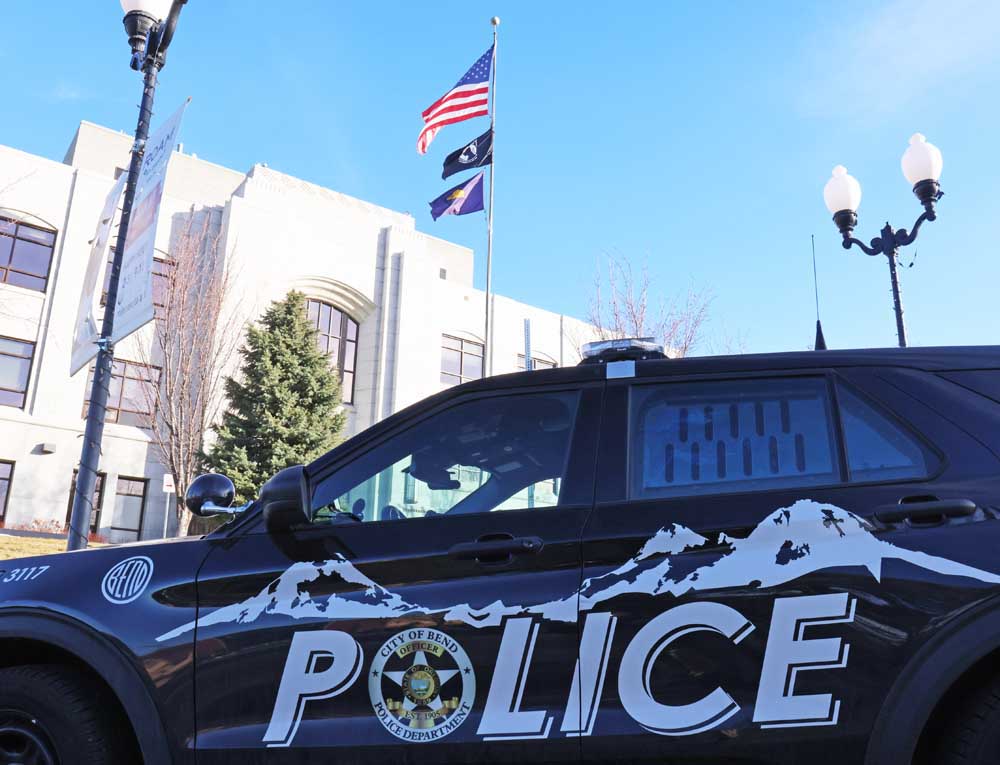6 decades later, sons seek answers on death of Detrick scientist
Published 4:00 am Tuesday, December 18, 2012

- Eric Olson is the son of Army bioweapons scientist Frank Olson, who died in 1953 in a suspicious fall from a hotel window in New York, and lives in the same Frederick, Maryland, home he did at the time of his father's death.
BALTIMORE _ First, the Army told Frank Olson’s sons that the Fort Detrick scientist’s death in a fall from a 13th-floor window of a New York hotel had been an accident.
Then a presidential commission revealed that the CIA had given an unwitting Olson LSD as part of a mind-control experiment in remote Western Maryland only nine days before the fall, and concluded that his death had been a drug-related suicide.
Trending
Now Eric and Nils Olson believe their father – a bioweapons expert who had told colleagues before he died that he wanted to quit the top-secret Special Operations Division – was murdered.
”The evidence shows that our father was killed in (CIA) custody,” said Eric Olson, 68, a Harvard-trained clinical psychologist who still lives in Frederick, Md. ”They have lied to us ever since, withholding documents and information, and changing their story when convenient.”
In a new lawsuit, filed six decades after their father’s death, the Olsons seek to shine a light on the government’s Cold War-era research into mind-control drugs, sensory deprivation, abuse and torture, to learn what happened during the predawn hours of Nov. 28, 1953, in Room 1018a of the Hotel Statler.
The revelation in 1975 that the CIA had used Frank Olson and other Army scientists as guinea pigs in the experiment at Deep Creek Lake in Garrett County was among the most explosive revelations of the post-Watergate investigations of intelligence excesses.
The probes by a presidential commission and three congressional committees led to sweeping changes in rules governing the CIA and other intelligence agencies.
But the Olsons, who received apologies in 1975 from President Gerald Ford and then-CIA Director William Colby, still don’t believe they’ve been told the full story. They say they are holding the CIA accountable for the death of their father at age 43. They are seeking unspecified damages.
Trending
A CIA spokesman said the agency does not comment on matters pending before U.S. courts.
”Without commenting on this specific legal matter, CIA activities related to MK-ULTRA have been thoroughly investigated over the years, and the agency cooperated with each of those investigations,” said spokesman John Tomczyk.
MK-ULTRA was the research program into mind control and other methods of behavioral engineering conducted at Fort Detrick and other sites during the 1950s and ’60s.
”In addition,” Tomczyk said, ”tens of thousands of pages related to the program have been declassified and released to the public.”
Eric Olson was 9 years old when his father died; Nils was 5. After his death, they say in the lawsuit, their mother descended into alcoholism, and they were sexually abused for years by a family acquaintance.
”We were just little boys and they took away our lives,” Eric Olson said. ”The CIA didn’t kill only our father, they killed our entire family again and again and again.”
Eric Olson has spent his adult life trying to understand his father’s death. He once spent a sleepless night in the hotel room. He pressed his father’s colleagues for answers. Forty years after Frank Olson was buried, Eric had his body exhumed and examined.
___
The events at issue date to the early days of the Eisenhower administration, when fears that the Soviet Union and China were developing chemical and biological substances to use in interrogations, brainwashing and attacks against the United States drove the CIA in 1953 to launch a program of its own.
According to a Senate committee established in 1975 to investigate the government’s intelligence activities _ Republican Sen. Charles McC. Mathias of Maryland was a member _ MK-ULTRA initially was intended to help the United States understand Soviet and Chinese capabilities and how they might be defeated.
”But the defensive orientation soon became secondary,” the so-called Church Committee reported. ”Chemical and biological agents were to be studied in order ‘to perfect techniques … for the abstraction of information from individuals whether willing or not’ and in order to ‘develop means for the control of the activities and mental capacities of individuals whether willing or not.’ ”
Frank Olson had joined the Special Operations Division of the Army’s Biological Laboratory at Fort Detrick at its inception in 1950. He was issued a Q clearance, the civilian equivalent of the military’s top secret clearance, and worked with the CIA on MK-ULTRA.
As part of that work, he traveled in 1953 to Britain, France and West Germany. At the secret British military research center at Porton Down, the sons say, Olson witnessed ”extreme interrogations” in which ”the CIA committed murder” using biological agents Olson had developed.
They say a psychiatrist there, William Sargent, grew concerned that Olson ”had serious misgivings related to those murders and might therefore pose a security risk,” and so recommended to his superiors that Olson no longer be granted access to classified research facilities in Britain.
___
Back from Europe, Olson joined colleagues from the Special Operations Division and the CIA at a conference at Deep Creek Lake in Garrett County.
After dinner there on Nov. 19, 1953, CIA chemist Sidney Gottlieb and his deputy served Olson and several others a bottle of Cointreau laced with LSD, according to the Church Committee report. The researchers did not tell their subjects they were being drugged until after they had ingested it.
Five days later, Olson told his supervisor, Army Col. Vincent Ruwet, that he wanted to resign. According to his sons, his decision was based on ”ethical concerns regarding the CIA’s conduct, including the extreme interrogations he had witnessed and the experiment at Deep Creek Lake.”
Ruwet contacted Gottlieb and his deputy, Robert Lashbrook, and the men took Olson to New York, ostensibly to be examined by a doctor who had experience with LSD, according to the Church Committee report. Before they left, Ruwet told Olson’s wife, Alice, that he might be dangerous to his family. His sons say he had never been violent.
On Nov. 27, Dr. Harold Abramson recommended that Olson be returned to Maryland for psychiatric treatment. Olson called his wife to tell her he was headed home.
Early the next morning, he fell from the window of the room he was sharing with Lashbrook.
Interviewed by The Baltimore Sun in 2004, Eric Olson recalled the subsequent visit from Ruwet, his father’s boss and friend.
”Everybody had this stony-faced expression,” Olson said. ”I remember Ruwet saying, ‘Your father was in New York and he had an accident. He either fell out the window or jumped.’ ”
Within two weeks, the CIA’s general counsel had formed a conclusion: Olson’s death was ”the result of circumstances arising out of (the Deep Creek Lake) experiment,” and there was a ”direct causal connection between that experiment and his death.”
But the finding was classified. The CIA told the family only that Olson had died during the course of his official duties, without mentioning LSD. The family began to receive death benefits under the Federal Employees Compensation Act.
After Olson’s death, Ruwet began visiting their mother regularly for drinks. ”Thus began the alcoholism that would torment (her) for the rest of her life,” the sons say in the suit.
___
In 1975, a commission appointed by Ford to investigate CIA activities within the United States disclosed for the first time that in 1953 an Army scientist had fallen to his death from a hotel room in New York after the CIA had given him LSD.
The Olson family confronted Ruwet, who confirmed that the scientist was Frank Olson. The family demanded a full accounting, assurances from the government that such experiments would never again be permitted, and a financial settlement.
In the White House, then-Deputy Chief of Staff Dick Cheney wrote a memo to Chief of Staff Donald Rumsfeld on ”The Olson Matter/CIA Suicide.”
Cheney wrote that there were ”serious legal questions that (would) have to be resolved concerning the Government’s responsibility,” and expressed concern that it ”might be necessary to disclose high-level classified national security information in connection with any court suit.”
Ford invited the Olsons to the Oval Office, where he apologized for Olson’s death. The family agreed to a $750,000 settlement, approved by Congress in legislation sponsored by Mathias.
But the sons did not believe the official story. After their mother died in 1993, they had their father’s body exhumed.
The medical examiner’s report in 1953 had described lacerations on Olson’s body. The 1994 autopsy revealed a previously undisclosed hematoma on Olson’s temple.
James Starrs, the George Washington University forensic pathologist who examined the body, concluded that Olson had suffered a blow to the head before he fell from Room 1018a. He called the evidence ”rankly and starkly suggestive of homicide.”
A CIA manual produced in the 1950s had offered advice on killing: ”The most efficient accident, in simple assassination, is a fall of 75 feet or more onto a hard surface. … It will usually be necessary to stun or drug the subject before dropping him.”
The Manhattan district attorney’s office opened a homicide investigation in 1996. While they were unable to bring charges, they changed the official cause of death from ”suicide” to ”unknown.”
___
Journalist H.P. Albarelli Jr. spent a decade interviewing Olson’s surviving former colleagues and poring over documents for his 2009 book ”A Terrible Mistake: The Murder of Frank Olson and the CIA’s Secret Cold War Experiments.”
Although Albarelli differs with the Olsons on some points _ he says there is no evidence that Olson witnessed ”extreme interrogations” in England, or that the CIA manual was produced before Olson’s death _ he says he has no doubt the scientist was murdered.
But proving it now, with all the principals dead, will be a challenge.
”Who do you bring into court? Who do you depose?” Albarelli asked. ”Most of the people at the CIA, the Olson case is ancient history to them.”
Scott D. Gilbert, the Washington attorney representing the Olsons, said the CIA ”has yet to tell the truth on any level in connection with this case” and continues to withhold ”key documents.”
Gilbert said he will obtain those documents, seek testimony from Cheney and Rumsfeld and get materials from the New York investigation.
”In addition, as has been our experience in other high-profile cases, we have been contacted by a number of individuals offering to share information and relevant CIA-related experiences with us, and we are investigating those leads and potential witnesses,” Gilbert said. ”We believe that we have seen only the tip of the iceberg in this regard.”








